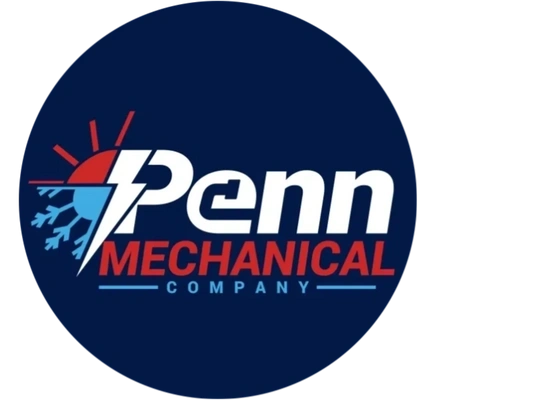Air Duct Repair
Air Duct Repair in Berks County in Pennsylvania — Stop Wasting Air, Start Gaining Comfort | Penn Mechanical Company
A great A/C or furnace can only do so much if your ductwork is leaking, crushed, or undersized. The signs start small—one room never cools, another overheats, dust returns a day after cleaning, or you hear a faint whistle when the system runs. Then the pain points kick in: longer run times, higher bills, musty odors from the attic or basement, and a system that feels loud but not effective.
Penn Mechanical Company fixes the airways in your home. We identify where conditioned air is escaping, repair the underlying cause (not just the symptom), and verify the results so that every register pulls its weight again.
Do I Need Air Duct Repair? (From generic clues to specific symptoms)
- Comfort drift: hot/cold spots, slow recovery, or rooms that never reach the set point
- Air noises: whistling at registers, rattling in walls, or fluttering sounds from flex runs
- Dust & odors: dust buildup soon after cleaning, musty or attic smells when the blower starts
- High runtime/bills: system runs longer with little payoff, or cycles rapidly on/off
- Visible issues: disconnected boots, crushed/kinked flex, torn insulation, or gaps where ducts meet drywall
- Condensation: sweating ducts in summer, rusty boots, or damp insulation around runs
Two or more of these? It’s time to inspect, test, and repair.
- BBB A+ Rated
- owner over 30 years business
- 100% Satisfaction Guarantee
- Fully Licensed & Insured
- On-Time Guarantee
- Upfront Pricing
What’s Usually Wrong (and how we fix it)
- Leaks at Seams, Boots & Plenums: Seal with mastic (not cloth duct tape), UL-listed foil tape where appropriate; foam-seal boots to drywall; gasket filter slots and air-handler doors.
- Disconnected, Crushed, or Kinked Flex: Reconnect with metal collars and draw-bands, re-hang to proper radius, replace damaged sections, and protect against future compression.
- Undersized or Starved Returns: Add/resize return drops or jump ducts; open blocked pathways; install a sealed media filter cabinet that doesn’t choke airflow.
- Poor Layout & Sagging Runs: Re-route long or looping runs, add hard pipe in high-flow sections, and support flex every 4–5 feet to maintain round shape.
- Insulation Gaps & Sweating: Re-insulate exposed metal, repair torn jackets, and air-seal before insulating to prevent condensation and energy loss.
- Equipment Connections: Rebuild leaky supply/return plenums, seal coil cabinets, and correct transitions so air flows smoothly (less noise, more delivery).
Our Diagnostic Approach (Why the repair sticks)
- Interview & visual survey — where it’s uncomfortable, what changed, and visible trouble spots
- Static pressure & airflow readings — confirms starved returns or restrictions
- Leak detection — smoke tracing, pressure measurements, and targeted access checks
- Plan with priorities — we separate safety/comfort must-fixes from nice-to-haves
- Repair & seal — mastic, collars, correct supports, and right-sized components
- Verify — re-measure pressure/airflow and demonstrate the improvement at the registers
You’ll get a short summary with before/after readings so you can see the improvement, not just feel it.
What Air Duct Repair Includes (functions you can expect)
- Boot, plenum, and seam sealing with mastic/foil tape (never cloth duct tape)
- Re-hanging and straightening sagging flex; replacing crushed or torn sections
- Adding or resizing return air for quieter, stronger airflow
- Transition fixes at the air handler/coil; sealing filter cabinets and access doors
- Register boot-to-drywall sealing to stop attic/crawlspace air from entering
- Re-insulating exposed metal and repairing damaged jackets
- Balancing adjustments for more even delivery room-to-room
- Post-repair verification: static pressure, temperature split, and spot airflow checks
Real-World Benefits (you’ll notice these right away)
- Even temperatures upstairs and down—no more problem room
- Quieter operation as turbulence and whistles disappear
- Cleaner air with fewer attic/crawlspace leaks pulling dust into the house
- Lower run time and less wear on your equipment
- Better dehumidification in summer because the coil finally sees correct airflow
Repair vs. Replace: When is new ductwork smarter?
Choose repair when damage is localized, most trunks are sound, and returns can be added cleanly. Consider replacement/redesign if ducts are badly undersized, metal is rusted through, routing is impossible to fix, or you’re completing a major remodel. We’ll show side-by-side options so you can decide.
Our Clean, Straightforward Process
- Flat, up-front pricing approved before work begins
- Protection first: floor covers, clean cutouts, tidy line sealing
- Code-aware, best-practice materials (mastic, collars, true hangers)
- Same-day turnarounds for most repair scopes
- Clear hand-off: what we fixed, what readings changed, and simple owner tips
Homeowner Tips
- Change filters on schedule; a starved filter mimics a duct issue
- Keep supply/return grilles unblocked by rugs or furniture
- Peek into the attic/crawl annually for crushed flex or critter damage
- If you smell attic/crawl air at a register, call—boots may have loosened
Frequently Asked Questions
Usually the opposite: smoother transitions and correct airflow, reduce hiss and rumble.
We prioritize mechanical access and mastication because it’s durable and inspectable. If a section is inaccessible, we’ll discuss alternatives.
Yes—static pressure, temperature split, and spot flows are checked so we can show improvement.
Absolutely. Ducts set the ceiling for equipment performance; fixing them first makes new equipment shine.
Why Penn Mechanical Company
Design-minded repairs, not patchwork; licensed, background-checked technicians; measured results; and tidy workmanship that respects your home. We don’t sell tape—we solve airflow.
Ready to Fix the Air Highways in Your Home?
Tell us which rooms struggle, what you hear when the system runs, and where ducts are located (attic, basement, crawlspace). We’ll inspect, test, and repair so your air goes where it belongs. Prefer to talk it through? Call 484-877-8864, and a Penn Mechanical duct specialist will help you plan the smartest next step.
